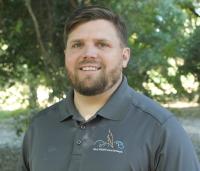
OWCN Logistics: Superfund not super fun…
You may be asking yourself what does OWCN and oiled wildlife have to do with a Superfund site. It could be that HAZWOPER training is required for both oil spill response and the handling of other hazardous waste or maybe the fact that our equipment yard at UC Davis currently sits on a Superfund site. If either of these two came to mind, then you would be correct.
According to the USEPA website, (t)housands of contaminated sites exist nationally due to hazardous waste being dumped, left out in the open, or otherwise improperly managed. These sites include manufacturing facilities, processing plants, landfills and mining sites. In the late 1970s, toxic waste dumps such as Love Canal and Valley of the Drums received national attention when the public learned about the risks to human health and the environment posed by contaminated sites. In response, Congress established the Comprehensive Environmental Response, Compensation and Liability Act (CERCLA) in 1980. CERCLA is informally called Superfund. It allows EPA to clean up contaminated sites. It also forces the parties responsible for the contamination to either perform cleanups or reimburse the government for EPA-led cleanup work.
One of these contaminated sites, the LEHR (Laboratory for Energy related Health Research) Project was an active research area from the 1950’s to 1980’s where UC Davis, in collaboration with the Department of Energy, studied the health-related effects of low-level radiation. Waste from these projects were disposed of in three landfills on site, which resulted in ground water contamination. The primary contaminants included chloroform, hexavalent chromium, and nitrate. To remediate this damage UC Davis and the EPA are moving forward with a project that will cap the contaminated areas, which will reduce leaching. They will also create drainage and retention ponds to help capture any runoff.
With this much needed remediation project moving forward, OWCN will be losing its temperature-controlled supply building (W3) and a large portion of its equipment yard (Boneyard) . These loses do affect readiness but fear not there is a plan in place to make sure we continue to be ready to respond at a moment’s notice. The team will move its temperature sensitive equipment into a newly constructed storage building (W6). As for all our trailers and vehicles we will be moving them to an adjacent lot, which will be shared with CVET (California Veterinary Emergency Team).
Although the superfund remediation brings inconvenience through the loss of space and additional construction traffic into our space, we will do our best to coordinate with the construction teams so we are minimally affected. And, above all, we recognize that the remediation of this site will benefit the environment and all its inhabitants, which aligns with a One Health approach.
“Of all the questions which can come before this nation, short of the actual preservation of its existence in a great war, there is none which compares in importance with the great central task of leaving this land even a better land for our descendants than it is for us.”
-Theodore Roosevelt
Thanks for reading!
Danny Vickers
Wildlife Logistics Specialist

